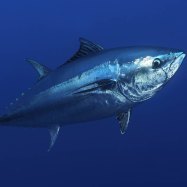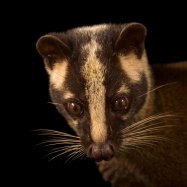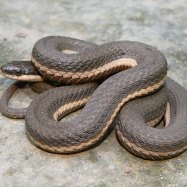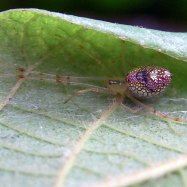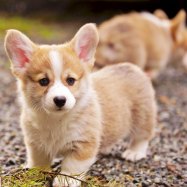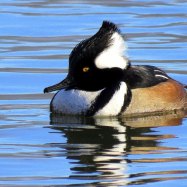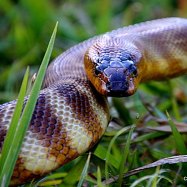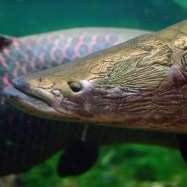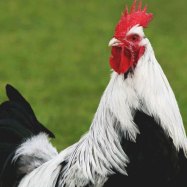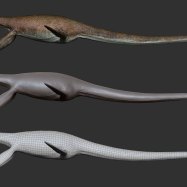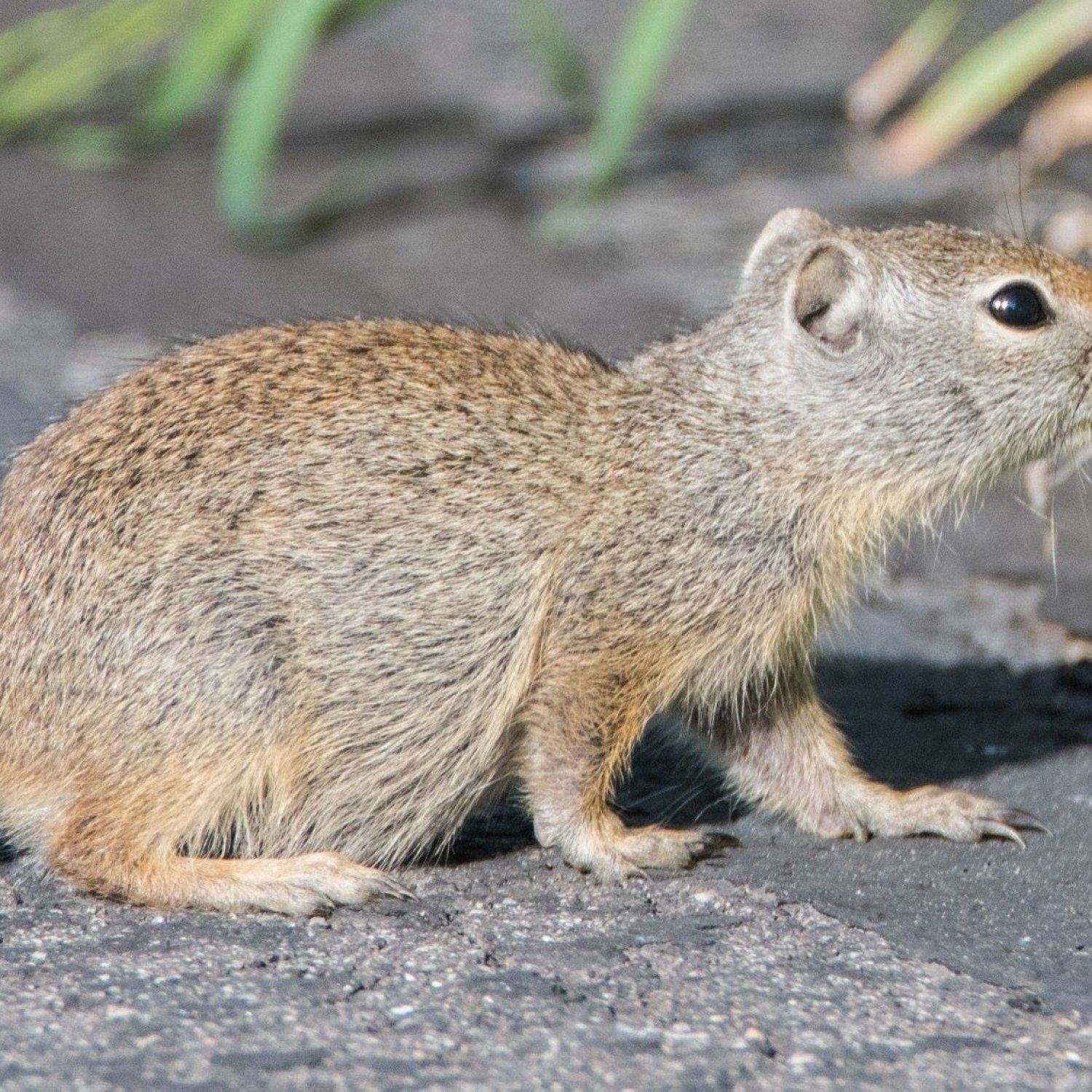
Uinta Ground Squirrel
8-10 inches
The Uinta Ground Squirrel, found in the Uinta Basin region of Utah and Colorado, is a cute and compact member of the Sciuridae family. With a length of 8-10 inches, these little animals are great at burrowing and foraging for food. Keep an eye out for these adorable critters on your next trip to the Uinta region! #UintaGroundSquirrel #Sciuridae #UtahWildlife
Animal Details Summary:
Common Name: Uinta Ground Squirrel
Kingdom: Animalia
Habitat: Grasslands, meadows, and open areas
A Glimpse into the World of Uinta Ground Squirrels: Small But Mighty
The world is full of a diverse range of animals, each with unique qualities, behaviors, and habitats. Among these animals, the Uinta ground squirrel stands out as a fascinating and charming creature that has captured the hearts of many. Scientifically known as Urocitellus armatus and commonly referred to as the Uinta ground squirrel, this particular species has a lot to offer in terms of its physical characteristics, behaviors, and adaptability. In this article, we delve deeper into the world of Uinta ground squirrels, exploring their habitat, feeding habits, geographical distribution, body structure, and much more Uinta Ground Squirrel.The Ground Squirrel Family
Before we dive into the specifics of the Uinta ground squirrel, it is essential to understand that they belong to the ground squirrel family, which is scientifically known as Sciuridae. This family comprises over 280 species, including chipmunks, tree squirrels, flying squirrels, and prairie dogs, to name a few. However, the Uinta ground squirrel has its own distinct features that set it apart from its relatives.Discovering the Uinta Ground Squirrel
The Uinta ground squirrel can be found in the grasslands, meadows, and open areas of the western United States, making its primary residence in the Uinta Basin region of Utah and Colorado. This region is known for its semi-desert climate, with high temperatures in the summer and relatively cold winters. With such weather conditions, it is not surprising that the Uinta ground squirrel has unique features that help it adapt to its environment.The Ultimate Survivors
As the saying goes, “survival of the fittest” and the Uinta ground squirrel is a perfect example of this. Despite living in such harsh conditions, these squirrels have developed impressive adaptations that help them thrive. For starters, they have a herbivorous feeding method, which means they primarily eat plants, making them crucial herbivores in their ecosystem Uintatherium. Their diet includes a variety of seeds, grasses, fruits, and even insects.Storing for Winter
One of the most impressive adaptations of these squirrels is their ability to store food for the winter. As the temperature drops and the ground freezes, they go into hibernation, and their food supply becomes scarce. To combat this, they spend the summer and fall season gathering food and skillfully storing them in underground burrows. They have special cheek pouches that help them carry food to their burrows, where they carefully pack and organize their food supply. This behavior helps them survive the long, cold winters without relying on external sources.A Colorful and Compact Appearance
The Uinta ground squirrel is also known for its vibrant appearance, with yellowish-brown fur and distinctive darker stripes on its back. This coloration helps them blend into their natural environment, providing them with a level of camouflage from predators such as hawks and coyotes. Additionally, their body shape is another adaptation that enables them to survive in their environment. Uinta ground squirrels have a small and compact body, with a length of about 8-10 inches, making them agile and swift on the rocky terrain of their habitat.A Social Life
Apart from fascinating physical characteristics and behaviors, these squirrels also have a unique social life. They live in colonies of up to 60 individuals, making them highly social animals. Within these colonies, there is a strict social hierarchy, with dominant males and females ruling the group and the rest following a structured system. This social structure helps them communicate, coordinate and cooperate with each other in gathering food, protecting their territory, and caring for their young ones.The Uinta Ground Squirrel and Humans
Humans and Uinta ground squirrels have a complicated relationship. On the one hand, these squirrels are beneficial to the environment, as they play a crucial role in pollination and dispersing seeds. On the other hand, they can be considered pests, damaging crops and gardens. Because of this, there have been efforts to control their population in some areas, often through trapping and relocation. However, it is crucial to tread carefully, as these squirrels also act as prey to other animals, and eliminating them can have a ripple effect on the ecosystem.The Impact of Climate Change
Another concerning factor for Uinta ground squirrels is the impact of climate change. As temperatures continue to rise, their habitat is predicted to get drier and warmer, which could affect their food supply, reproduction, and hibernation cycles. Additionally, increasing temperatures could also bring new predators to their habitat, endangering their survival. It is a worrying situation, and it highlights the importance of protecting these creatures and their natural habitat for the benefit of not only their species but also for the overall balance of the ecosystem.Conservation Efforts and Future Hopes
Fortunately, there have been efforts to protect and conserve the Uinta ground squirrel and their habitat. The Uinta Basin Rehabilitation | Restoration | Enhancement Project is one such effort that aims to maintain and enhance the natural ecosystem of the Uinta Basin and preserve it for future generations. The project focuses on providing a safe haven for endangered and sensitive species, such as the Uinta ground squirrel, along with promoting the sustainable use and management of natural resources in the area.In Conclusion
In conclusion, the Uinta ground squirrel may be small in size, but it holds significant importance in its ecosystem. With their unique adaptations, social structures, and vibrant appearance, these squirrels have captivated the hearts of many. Their survival and overall well-being are closely tied to the well-being of their environment, making it crucial for us as humans to take deliberate steps to protect and conserve them. The Uinta ground squirrel serves as a reminder of the intricate balance of nature and how we must strive to protect it for generations to come.

Uinta Ground Squirrel
Animal Details Uinta Ground Squirrel - Scientific Name: Urocitellus armatus
- Category: Animals U
- Scientific Name: Urocitellus armatus
- Common Name: Uinta Ground Squirrel
- Kingdom: Animalia
- Phylum: Chordata
- Class: Mammalia
- Order: Rodentia
- Family: Sciuridae
- Habitat: Grasslands, meadows, and open areas
- Feeding Method: Herbivorous
- Geographical Distribution: Western United States
- Country of Origin: United States
- Location: Uinta Basin region of Utah and Colorado
- Animal Coloration: Yellowish-brown with darker stripes on the back
- Body Shape: Small and compact
- Length: 8-10 inches
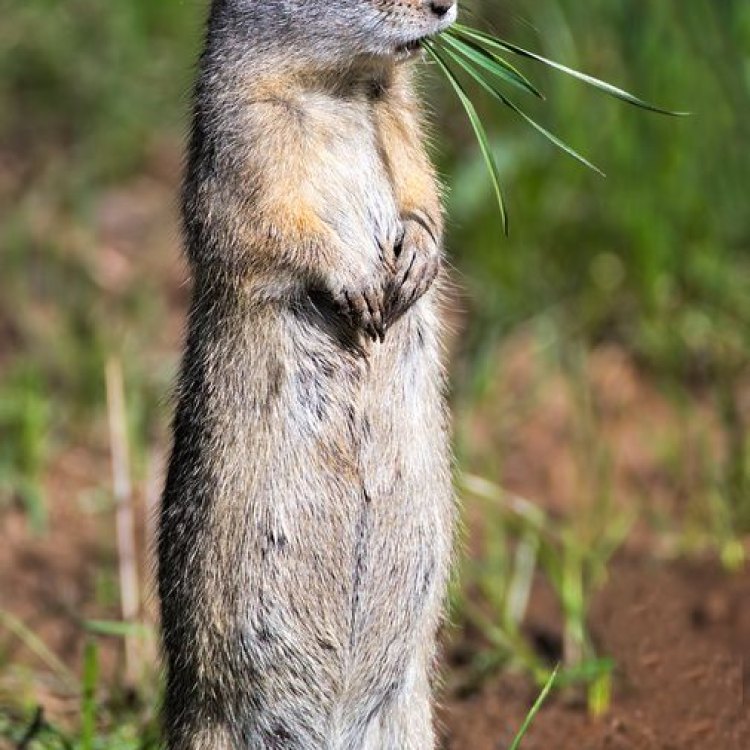
Uinta Ground Squirrel
- Adult Size: 8-12 inches
- Average Lifespan: 2-4 years
- Reproduction: Sexual
- Reproductive Behavior: Mating occurs from March to May
- Sound or Call: Chirping and whistling sounds
- Migration Pattern: Non-migratory
- Social Groups: Solitary, but colonies are formed during breeding season
- Behavior: Diurnal and active during the day
- Threats: Predators, habitat loss, and climate change
- Conservation Status: Least Concern
- Impact on Ecosystem: Seed dispersal and burrowing activities
- Human Use: Not utilized by humans
- Distinctive Features: Striped pattern on the back
- Interesting Facts: Can hibernate for long periods of time
- Predator: Birds of prey, snakes, and carnivorous mammals
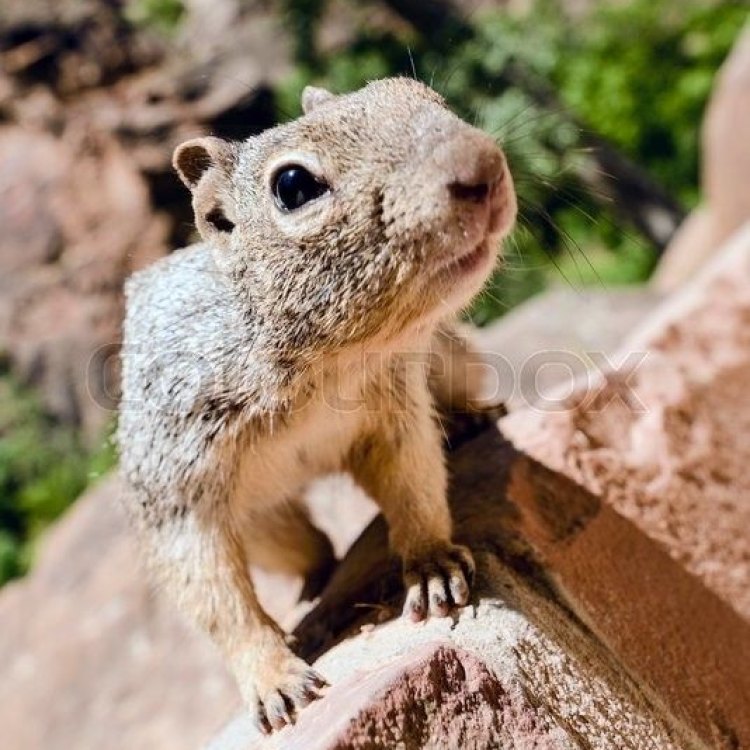
Urocitellus armatus
The Fascinating World of Uinta Ground Squirrels: An Insight into Their Unique Features, Behavior, and Impact on Ecosystem
When you think of squirrels, what image comes to mind? Most likely, it's a small, bushy-tailed rodent frantically gathering nuts and seeds to survive the winter. However, there is one type of squirrel that stands out from the rest – the Uinta ground squirrel. With its distinctive striped pattern on the back, chirping calls, and remarkable hibernation abilities, this little creature is a unique and fascinating member of the animal kingdom.The Uinta ground squirrel, also known as the Uinta chipmunk, is a small mammal found in western North America, specifically in the high-altitude regions of the Rocky Mountains PeaceOfAnimals.Com. Let's delve into the world of these ground squirrels and uncover their distinctive features, behavior, impact on the ecosystem, and more.
The Uinta Ground Squirrel's Physical Characteristics and Reproduction
Measuring about 8-12 inches in length, the Uinta ground squirrel is a small but robust creature. They have short, dense fur that is a pale buff color with darker stripes running down their back. This unique striped pattern acts as camouflage when they are hiding in their grassland habitat. They also have small, rounded ears that can move independently to detect sounds, and sharp claws for digging.Uinta ground squirrels are sexually dimorphic, with males being slightly larger than females in size. They are also social animals, but unlike other species of squirrels, they do not live in large groups. They prefer a solitary lifestyle, but during the breeding season from March to May, they form colonies consisting of one male and multiple females.
Like many other mammals, the Uinta ground squirrels reproduce sexually Urechis Unicinctus. Females give birth to one litter of 5-8 offspring per year. The newborns, called pups, are born blind and helpless and are cared for by the mother until they are ready to venture out on their own. The pups reach maturity between 10-12 months and have a relatively short lifespan of 2-4 years.
Daily Habits and Behavior of Uinta Ground Squirrels
The Uinta ground squirrel is a diurnal creature, meaning they are active during the day and rest at night. They are also known for their high energy and speedy movements, which makes them a fun and exciting sight to watch.As burrowing animals, Uinta ground squirrels spend most of their time on the ground, but they are also skilled climbers, using their sharp claws and strong hind legs to navigate trees and other structures. They are omnivorous, meaning their diet consists of both plant materials and insects, making them a vital part of their ecosystem.
One of the distinctive behaviors of Uinta ground squirrels is their vocalizations. They produce a range of sounds, including chirping, squeaking, and whistling, to communicate with each other and to warn of potential dangers. These calls are essential, especially during their breeding season when they form colonies, and communication is necessary for survival.
The Threats Facing Uinta Ground Squirrels and Their Conservation Status
As with many other animal species, Uinta ground squirrels face several threats to their survival. One of the primary threats is predation, with birds of prey, snakes, and carnivorous mammals being their main predators.Habitat loss also poses a significant threat to these creatures. As human development continues to expand into their natural habitats, the Uinta ground squirrels' homes are being destroyed, leaving them with limited resources and safe spaces.
Climate change is another danger to Uinta ground squirrels. As temperatures rise, snow melts earlier and freezes later, disrupting their hibernation patterns and making it difficult for them to find food. This also affects the timing of their breeding season, which can negatively impact their population.
Despite these threats, the Uinta ground squirrel's conservation status is currently listed as least concern on the International Union for Conservation of Nature (IUCN) Red List. However, it is essential to continue monitoring their population and take measures to protect their habitats to ensure their survival in the long run.
The Impact of Uinta Ground Squirrels on the Ecosystem
While Uinta ground squirrels may seem like small and insignificant creatures, they play a crucial role in their ecosystem. Their burrowing activities help aerate and mix the soil, allowing for better growth of plants and vegetation. They are also responsible for seed dispersal, as any seeds they collect and bury for winter storage are often forgotten and eventually grow into new plants.Additionally, Uinta ground squirrels serve as a source of prey for larger predators, contributing to the balance of the food chain. Without them, there would be a significant disturbance in the ecosystem, affecting other plant and animal species.
Interesting Facts About Uinta Ground Squirrels
Aside from their unique physical features and behavior, there are several interesting facts about Uinta ground squirrels that make them even more remarkable.Did you know that Uinta ground squirrels can hibernate for seven to nine months out of the year? As they prepare for winter, they increase their body fat and dig deep burrows to escape the cold. Their bodies then go into a state of torpor, slowing down their metabolic rate and saving energy until spring arrives. This hibernation ability is essential for their survival, especially in high-altitude regions where temperatures can drop significantly.
Another fun fact is that Uinta ground squirrels are not utilized by humans in any way. Unlike other squirrel species, they are not hunted for food or fur and are not kept as pets. Instead, these creatures are observed and admired in their natural habitats where they continue to fulfill their vital roles in the ecosystem.
In Conclusion
The Uinta ground squirrel may not be as well-known as other squirrel species, but it is undoubtedly a unique and fascinating creature. With its distinctive striped pattern, chirping calls, and remarkable hibernation abilities, it is a testament to the diversity and wonder of the natural world.However, as with many other animals, the Uinta ground squirrel faces several threats to its survival. It is crucial to continue monitoring their population and taking measures to protect their habitats to ensure their long-term survival. By learning more about these small but significant creatures, we can appreciate and value their place in the ecosystem and do our part in preserving their existence for generations to come.
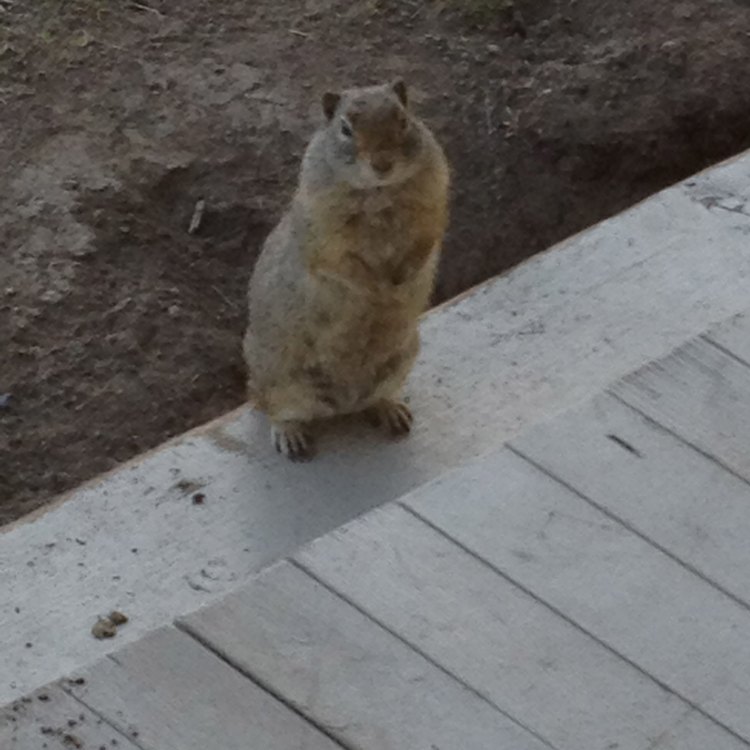
A Glimpse into the World of Uinta Ground Squirrels: Small But Mighty
Disclaimer: The content provided is for informational purposes only. We cannot guarantee the accuracy of the information on this page 100%. All information provided here may change without prior notice.

